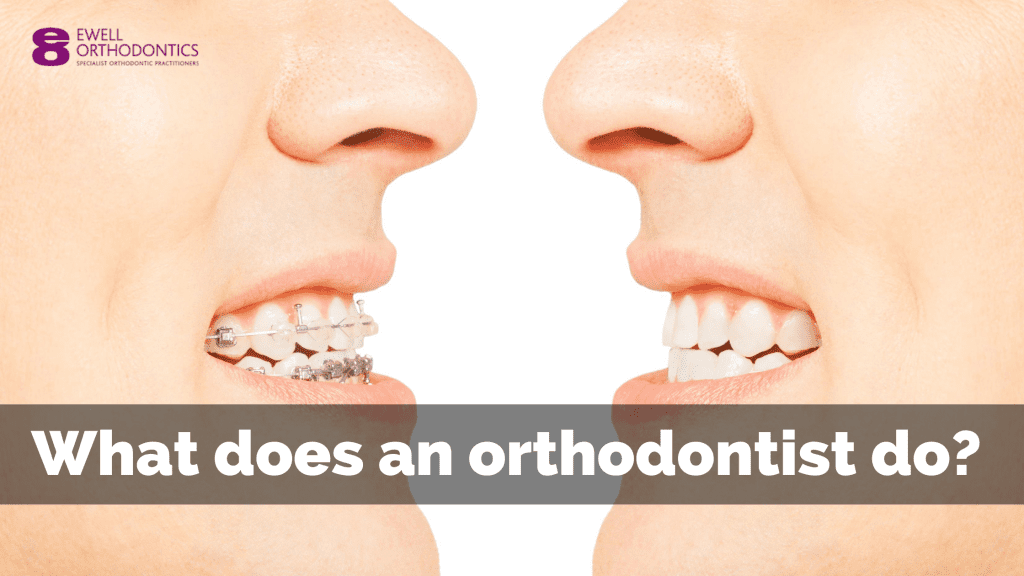Legacy Orthodontics for Dummies
Table of ContentsUnknown Facts About Legacy OrthodonticsNot known Details About Legacy Orthodontics The Of Legacy OrthodonticsThe Buzz on Legacy OrthodonticsSee This Report on Legacy Orthodontics
In enhancement, we provide adjustable treatment timetables, adaptable settlement options and a fun, pleasurable experience.An orthodontist is a dentist trained to identify, avoid, and treat teeth and jaw irregularities. They fix existing conditions and are educated to recognize troubles that may establish in the future. Orthodontists deal with people of all ages, from youngsters to adults. People typically link an excellent smile with healthiness.
Malocclusion, or misaligned teeth, can result in oral concerns, consisting of dental cavity, gum disease, and tough or painful chewing. Not everyone is birthed with straight teeth. If you have a poor bite or large rooms between your teeth, you may intend to consult a dental professional concentrating on orthodontic care.
The Ultimate Guide To Legacy Orthodontics
( Photo Credit: DigitalVision/Getty Images) Orthodontists use repaired and detachable dental tools, like braces, retainers, and bands, to change the setting of teeth in your mouth. Orthodontic therapy is for dental problems, consisting of: Uneven teethBite troubles, like an overbite or an underbiteCrowded teeth or teeth that are also far apartJaw misalignmentThe goal of orthodontic therapy is to boost your bite.
While you might think of orthodontists as mainly for children or young adults who need braces, they can correct dental problems at any kind of age. Orthodontists go to university, dental institution, and orthodontic institution.
, but not all dental experts are orthodontists. They focus on two areas: Exactly how to properly and securely relocate teeth How to correctly assist advancement in the teeth, jaw, and faceOnce an orthodontist has completed training, they have the choice to become board accredited.
The Facts About Legacy Orthodontics Revealed
Imbalance, or malocclusion, is the most common reason people see an orthodontist. It is genetic and is the result of size distinctions in between the top and reduced jaw or between the jaw and teeth. Malocclusion brings about tooth congestion, an askew jaw, or irregular bite patterns. Malocclusion is typically treated with: Your orthodontist affixes steel, ceramic, or plastic square bonds to your teeth.
If you have only small malocclusion, you might be able to use clear braces, called aligners, rather than traditional braces (https://sketchfab.com/legacyortho). Some individuals require a headgear to aid relocate teeth into line with pressure from outside the mouth. After braces or aligners, you'll need to use a retainer. A retainer is a personalized tool that maintains your teeth in position.
They're most often utilized on youngsters. They can develop added space in the mouth without having to pull teeth. If you have a major underbite or overbite, you might need orthognathic surgery (likewise called orthodontic surgery) to extend or shorten your jaw. Orthodontists make use of cables, surgical screws, or plates to sustain your jaw bone.
You might require to see an orthodontist if you have: Crowding or not enough space for all of your teethOverbite, when your upper teeth come over your base teethUnderbite, when your base teeth are also far forwardSpacing or problems with gapsCrossbite, Website which is when your upper teeth fit behind your bottom teeth when your mouth is closedOpen bite or a vertical gap in between your front base and upper teethMisplaced midline, when the facility of your base and top teeth do not line up Fixing an oral malocclusion can: Make biting, eating, and talking easierImprove the balance of our face and your general appearanceEase discomfort from temporomandibular joint disordersSeparate your teeth and make them much easier to clean, assisting prevent dental cavity or tooth cavities It's usually a dental practitioner that initially notifications misaligned teeth throughout a regular exam.
Little Known Questions About Legacy Orthodontics.

During your initial orthodontic appointment, you'll likely have: An oral examPhotos taken of your face and smileDental X-raysPanoramic (360 degree) X-rays of your face and headImpressions to create mold and mildews of your teethThese examinations will certainly help your orthodontist understand just how to wage your treatment. leesburg braces. An orthodontist is a dentist who's had training to treat your teeth and jaw
Orthodontists may perform surgery, exams,X-rays,and more to help you attain a more comfortable, much healthier smile. An orthodontist is focused on your bite, so something like a broken tooth would certainly be taken care of by a dental expert. Orthodontists are dental professionals however not all dental experts are orthodontists. Orthodontists are focused on your bite, or the way your teeth fit together, and the straightness of your teeth.
Ever before asked yourself how stars constantly seem to have flawlessly straightened teeth? Orthodontists are oral professionals who concentrate on correcting irregularities in the teeth and jaws.
5 Simple Techniques For Legacy Orthodontics

, orthodontists have a diverse toolkit at their disposal. These tried-and-true braces make use of a system of brackets bound to the teeth and attached by wires.
Clear aligners, like Invisalign, are a preferred choice for patients looking for an extra discreet treatment option. These detachable trays are custom-made to gradually move the teeth's position. Headwear may be used along with dental braces or aligners to apply added targeted pressures, particularly for remedying jaw inconsistencies. In cases of narrow jaws, palatal expanders can be made use of to produce room for appropriate tooth alignment.